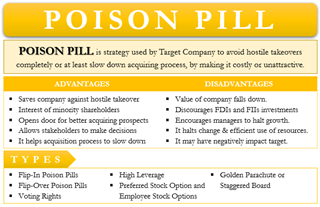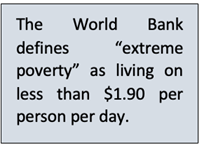Friday, 8th April 2022
CAG report on Indian Railways
In News
CAG report on Indian railways was recently tabled in Parliament which highlighted its poor punctuality and delays in ongoing projects execution in the last financial year.
About the News
- The audit by the Comptroller and Auditor General (CAG) found that amid little improvement in average speeds, travel time of trains has increased over the past few years.
- On dedicated freight corridors, the CAG has stressed that despite the DFCCIL project being closely monitored by the Prime Ministers’ Office, it still has slow pace of land acquisition by the states which has been a major hurdle to the project.
- Dedicated Freight Corridor Corporation of India Limited (DFCCIL) could not fully utilize the World Bank fund resulting in payment of avoidable commitment charges to the tune of Rupees. 16 crore.
What are the major findings of the report?
- Poor punctuality: The punctuality of mail/express trains over IR have declined from 79 per cent (2012-13) to 69.23 per cent (2018-19) that too at the terminating stations only.
- Global standard: When compared to other countries, the Indian Railway train delayed by up to 15 minutes is considered to have been punctual, whereas in countries like the United Kingdom, Germany and others, the threshold is much stricter.
- Poor mobility: The report highlighted that Indian Railways, despite investing Rs 2.5 lakh crore on track infrastructure during 2008-19, has failed to improve on the mobility outcomes.
- Mission Raftaar: It was introduced in 2016-17 targeted an average speed of 50 kmph for mail/express and 75 kmph for freight trains by 2021-22 but the average observed speed of mail/express and freight trains until 2019-20 was, however, still around 50.6 kmph and 23.6 kmph, respectively.
- Delivery performance: Indian Railways has no guaranteed delivery time for goods consignment due to non-scheduling of goods trains operation.
- Zero-based timetable: The CAG has lauded the new timetable schematics of Railways, prepared in collaboration with IIT Bombay, which would be able to achieve punctuality targets. With the new timetable, it is possible to achieve 100 per cent punctuality in the New Delhi-Howrah route, which is the busiest in Railways.
- Misplaced estimate by CONCOR: The railway PSU has suffered loss to the tune of Rs 86 crore in its decision to opt for an Advanced Fright Scheme in March 2019, without proper cost-benefit analysis, after it paid Railways advanced freight of Rs 3000 crore.
- Through the advance freight payment scheme, Indian railways aims to improve their operating ratio — the amount spent by the national transporter to earn Rs 100. Indian Railways’ operating ratio for 2018-19 was 96.2, which was slightly better than its operating ratio for 2018-18 which stood at a 10-year low figure of 98.4.
- Dedicated freight corridor: The CAG reported that Dedicated Freight Corridor Corporation of India Limited could not fully utilise World Bank funds, resulting in payment of avoidable commitment charges of Rs 16 crore besides, the progress of the project has also been affected due to a delay in awarding of contracts.
- Eastern Dedicated Freight Corridor: It is an exclusive freight route spanning 1,875 km, which will connect Ludhiana in Punjab with Dankuni in West Bengal. Of this, only 351-km Khurja-Bhaupur section on the EDFC have been commissioned till date.
- Western Dedicated Freight Corridor: It is a 1,506-km corridor connecting Dadri in Uttar Pradesh and Jawaharlal Nehru Port Trust (JNPT) in Mumbai. Of this, only 306-km Rewari-Madar section on the WDFC have been commissioned till date.
- Delays on the overhead engineering front: Even after passage of around one and a half years from the stipulated date of completion, the progress of different activities in respect of OHE works ranged between 26.80% and 72.33%.
Sources:
CAG Report on Ordnance Factories
In News
Comptroller and Auditor General (CAG) in a report tabled in the Parliament has flagged a total 584 accidents which took place due to defect in quality of arms and ammunition produced by Ordnance factories from 2014-15 to 2018-19.
About the Report
- The report contains analysis of the performance of Ordnance Factory Board (OFB) for 2018-19, audit of performance of Materials and Components (M&C) Group of Ordnance Factories, audit of functioning of Ordnance Equipment Group (OEG) along with audit of issues relating to DPSUs.
- In October 2021, the Ministry of Defence (MoD) formed seven new DPSUs, which have taken over the operations of the 41 factories under the erstwhile Ordnance Factory Board (OFB).
- 584 accidents involving 10 ammunition items and one tank item during 2014-15 to 2018-19 were reported from the users’ end.
- The nature of the defects observed in the accidents indicated mainly the quality problems of various components, malfunctioning of ammunition and weapon damages.
- Substantial time taken in defect investigation of accidents delayed remedial measures to overcome the quality deficiencies.” In the context of ordnance factories, users mainly refer to the armed forces.
- Ordnance Factories have a system of multi-tiered quality checks by Quality Control (QC) section and Quality Assurance (QA) establishment attached with each factory.
- Recurrent return for rectification or rejections of M&C items at the QA stage and their reasons indicate inadequate and ineffective quality control checks by the factories and control and surveillance checks by the QA agencies (SQAEs) during the manufacturing process.
- OFB’s slippages in issue of end products was one of the key factors leading to critical deficiency of eight ammunition items, ranging from 15 to 93 per cent, in the Army’s stock.
- The Army being the principal customer, their projected requirement is the key factor for planning capacity. However, there were mismatches between production capacity of Ordnance Factories for M&C items and end products and Army’s projected long-term requirement (2014).
- Hence, capacity augmentation only based on Army’s long-term requirement without considering their annual order pattern is fraught with the risk of under-utilisation of augmented capacity.
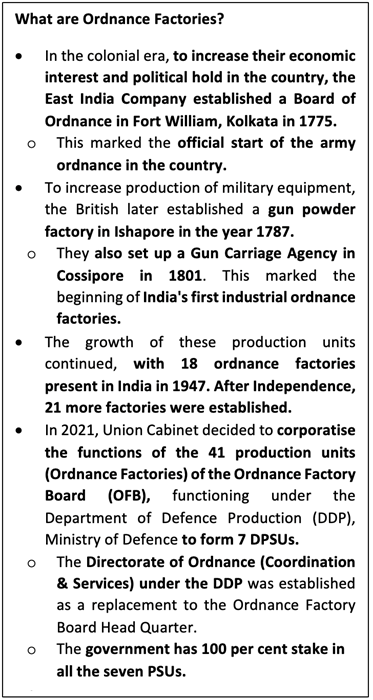

Sources:
- CAG report: Ordnance factories report 584 mishaps from 2014-19:
- 584 accidents due to defective products from Ordnance factories: CAG:
- Directorate of Ordnance (Coordination and Services):
- PC Act - CAG's Duties Powers and Conditions of Service:
- Frequently Asked Questions:
- Report No. 15 of 2010 - Performance Audit of Procurement of Stores and Machinery in Ordnance Factories:
Russia’s suspension from UN Human Rights Council (UNHRC)
In News
Russia has been recently suspended from the UN Human Rights Council.
About the News
- The resolution was adopted with 93 votes in favour, 24 against and 58 abstentions, including India.
- The resolution was moved by the United States over allegations that Russian troops had killed civilians while pulling back from towns around the Ukrainian capital of Kyiv.
- It notes in particular its grave concern over reports of “gross and systematic violations and abuses of human rights” and “violations of international humanitarian law” committed by Russia during its conflict with Ukraine.
- With this, Russia has become the second country to have its membership rights stripped at the rights council.
- In 2011, Libya was suspended by the assembly when upheaval in the North African country brought down the longtime leader Moammar Gadhafi.
- Russia’s removal from the UNHRC is significant in symbolic terms. It shows that the West and its allies are against Moscow’s war of Ukraine and helps to isolate the country on a global stage.
- India’s Stand on the Issue: India has been abstaining on procedural votes and draft resolutions in the UN Security Council, the General Assembly and the Human Rights Council since early this year.
Understanding UNHRC and its functioning
- What is it? It is an inter-governmental body within the United Nations system, which is responsible for strengthening the promotion and protection of human rights around the world.
- Working of the Council: UNHRC replaced the former UN Commission on Human Rights. It was created by the UNGA on March 2006.
- The Council meets at the UN Office in Geneva, Switzerland.
- Membership of the Council: It is made up of 47 UN Member States who are elected by majority vote through a direct and secret ballot at the UNGA.
- The membership of the Council is based on equitable geographical distribution. African and Asia-Pacific states have 13 seats each, Latin American and Caribbean states have 8 seats, Western European and other states 7 seats, and Eastern European states 6 seats.
- The members serve for three years and are not eligible for immediate re-election after serving two consecutive terms.
- Suspension Rules: As per the rules, the UNGA can suspend the rights and privileges of any Council member that it decides has persistently committed gross and systematic violations of human rights during its term of membership.
- To suspend a member, one needs a two-thirds majority vote by the General Assembly.
Source:
- Russia suspended from UN Human Rights Council over Ukraine war, India abstains on resolution
- Ukraine war: Russia suspended from UN Human Rights Council; India abstains from voting
- Russia suspended from UNHRC over Ukraine
- Explained: What is the UN Human Rights Council, whose membership Russia may lose after the Bucha massacre?
Image source:
The Nehru-Liaquat Agreement
On April 8, 1950, the Agreement between the Governments of India and Pakistan Regarding Security and Rights of Minorities, was signed. Jawaharlal Nehru and Liaquat Ali Khan were the Prime Ministers of India and Pakistan, respectively. The Nehru-Liaquat Pact, also known as the Delhi Pact, was a bilateral agreement signed between India and Pakistan in order to provide a framework for the treatment of minorities in the two countries. The need for such a pact was felt by minorities in both countries following Partition, which was accompanied by massive communal rioting. In 1950, as per some estimates, over a million Hindus and Muslims migrated from and to East Pakistan (present day Bangladesh), amid communal tension and riots such as the 1950 East Pakistan riots and the Noakhali riots.
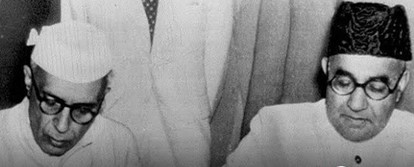
Source:
Export Preparedness Index 2021
In News
NITI Aayog has released the Export Preparedness Index (EPI) 2021 ranking the export performance and the export readiness of the states and union territories.
About EPI
- The idea behind the index is to create a benchmark to rank the states and UTs to help them individually promote a conducive export environment in the region.
- The index entails four pillars, eleven sub pillars and sixty indicators and covers across 28 states and 8 UTs.
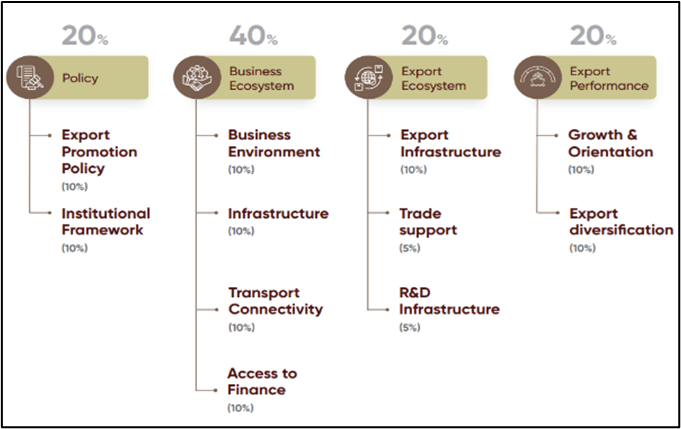
Status of Export in India
- Exports have been contributing roughly 20 per cent on average to the GDP of India for the past decade.
- India’s merchandise exports touched a record $418 billion in 2021-22, exceeding the government’s target of $400 billion in 2021-22 by about 5% and recording a 40% growth over the previous year, official data showed.
-
- This was led by robust growth in petroleum products, engineering, gems and jewellery, chemicals, and pharmaceuticals.
- India’s exports are gradually moving towards manufactured goods, visible in engineering and electronics goods exports.
- Overall, India has scored an average of 36.52 on the EPI. Both Export Promotion Policy and Business Environment are the two highest-scoring pillars, with the Trade support being the least scoring pillar.
- The three major challenges to India’s export promotion include intra- and inter-regional differences in export infrastructure; weak trade support and growth orientation across states; and lack of R&D infrastructure to promote complex and unique exports.

Factors Driving Export Growth

Ranking of States
- Gujarat, Maharashtra and Tamil Nadu have become the flag bearer of export lead growth.
- Gujarat has been leading the export contribution in India, with its total share accounting for 20.83 per cent as of 2020- 2021.

- States with higher exports also experience a high Gross State Domestic Product (GSDP).
- Similarly, they account for the highest FDI inflows in the country.
- Such statistics give us evidence that with an increase in the export competitiveness of the state, leads to an increase in the wealth of the states.
- Both top-performing states have productively managed and expanded their port infrastructure on the coastal line.
- With 48 ports, Maharashtra has the highest number of port’s in the country, followed by Gujarat with 42 ports.
- Major determinants causing the poor exports performance of the states that lag behind is the existing deficient business environment along with the absence of secure market and financial infrastructure.
- Suitable business infrastructure, large markets, secure financial ecosystem are key to a state’s export growth.
- Lack of availability and accessibility to credit facilities is impacting the export capacity of MSME in the hilly region.
- To avoid such barriers in the export sector at the sub-national level, the Government of India is now dwelling further into understanding the export ecosystem at the district level. Following the vision of ‘Sabka Saath, Sabka Vikas aur Sabka Vishwas’, the aim is to create district exports hubs within each state.
- The multilevel governance would provide a ground level understanding of the available export capabilities and circumstances within districts, thus guiding the government and the relevant stakeholder to formulate inclusive export policies.
Other Findings
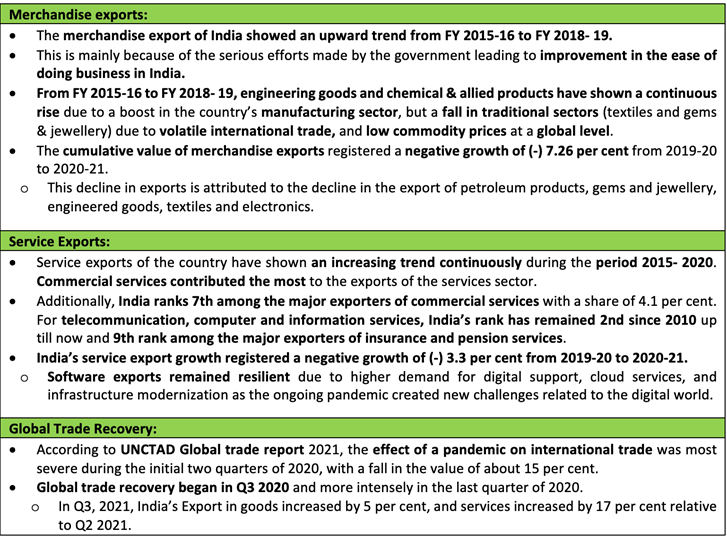
Conclusion: Since, the economic- reforms in the 1990’s, the production and distribution of cost-effective quality products and services drove the export growth in the country. The threat of the pandemic heavily impacted the global supply chain and affected demand for goods across the world. India defying all odds, registered a significant rise in its exports in 2021. So, the way ahead is full of opportunities but, it is necessary to continuously monitor the export preparedness of the states to promote peer-to-peer learning in the spirit of corporative federalism. States must recognise the socio-economic challenges unique to their region, carefully analyse some of the best practices of their peers and implement them in a manner best suited for them.
Question: Discuss the factors that led to the growth of India’s exports in recent times.
For articles related to the topic, please refer:
Sources:
Vel Festival
This is image from the 'Vel Festival’ held in Bandel in West Bengal’s Hooghly district. This festival is celebrated here by those with Tamil origins every year before Chaitra Sankranti. Observed in the first week of April every year, Vel celebrates the spirit of austerity and heroism. The word ‘vel’ means spear, which is a weapon of the Tamil war god Murugan. It is held here after the annual Shitala Puja every year. During the festival, devotees bathe in a pond, after which their cheeks, tongues or foreheads are pierced by a whip or a spear. The root of this is Hindu mythology, Indian gods have many incarnations and one such is that or Kartikeya, he is also known as Murugan. He is the son of Parvathi and Shiva and the brother of Ganesha. Murugan is considered as the god of war especially in Southern India. Indian mythology has a god assigned for every major activity similarly Murugan is considered as the “War God”.

Sources:
Intelligence Theft: India
- Context: According to a recent report from an Intelligence firm, state-sponsored Chinese hackers have targeted the power sector in India as part of an apparent cyber-espionage campaign.
- The hacking group, dubbed TAG-38, has used a malicious software called ShadowPad, which was previously associated with China’s People’s Liberation Army and the Ministry of State Security.
- They focused on at least seven “load dispatch” centers in northern India.
- These centers are those responsible for carrying out real-time operations for grid control and electricity dispersal near the disputed India-China border in Ladakh.
- The method the attackers used to make the intrusions compromised internet of things devices and cameras were unusual and the devices were found to be based in South Korea and Taiwan.
- The prolonged targeting of Indian power grid assets by Chinese state-linked groups offers limited economic espionage (is the unlawful targeting and theft of critical economic intelligence, such as trade secrets and intellectual property) or traditional intelligence gathering

Source:
- Suspected Chinese hackers collect intelligence from India’s grid near Ladakh
- Suspected Chinese hackers collected intelligence from country’s grid near Ladakh, says report
Image source:
The massacres in Bucha
- Context: More than 300 civilian bodies have been found in Ukraine's Bucha for which the Russian troops have been accused.
- Bucha is a suburb located about 25 km to the northwest of Kyiv (capital of Ukraine) that had an estimated population of around 36,000 before the Russian invasion began.
- Satellite images post invasion have shown the streets strewn with corpses, and this has drawn comparisons with the killings of civilians in this area during World War II.
- Between the First Battle of Kyiv (part of Hitler’s Operation Barbarossa against the Soviet Union,1941) and the Second Battle of Kyiv (1943) when the Red Army started to push back the Germans from Ukraine, this area of Bucha, saw the “Holocaust by bullets” where an estimated 5 million people, mostly Jews, were shot dead at close range.
- War crimes are defined as “grave breaches” of the Geneva Conventions, signed after World War II and Deliberately targeting civilians amounts to a war crime.
- The crime of genocide, as defined by the United Nations Genocide Convention of 1948, includes acts “committed with intent to destroy, in whole or in part, a national, ethnical, racial or religious group”.
- Genocide is seen as the gravest and most serious of all crimes against humanity.
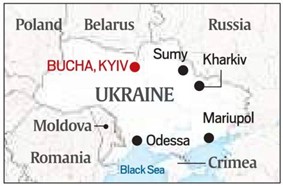
Source:
- Explained: What happened in Ukraine’s Bucha, and was it ‘genocide’?
- Bucha killings: Satellite image of bodies site contradicts Russian claims
Image source:
‘One nation, one legislative platform’
- Context: Lok Sabha Speaker has recently suggested the ‘One nation, one legislative platform’.
- Through this initiative, the proceedings of all legislatures-both Houses of Parliament and state assemblies and legislative councils will be available on one platform.
- The objective of the measure is to provide all the documents through metadata so that people can access the proceedings of the House and this is expected to be available by 2023.
- Initially only the written proceedings would be available on the platform.
- Such a digital platform, a portal that not only gives the necessary technological boost to the parliamentary system, but also works to connect all the democratic units of the country.
- This will ensure that all the resources for the legislatures are available on the portal so that central and state legislatures shall work in paperless mode.
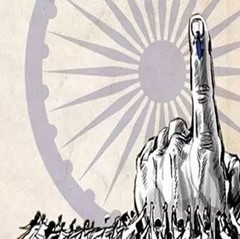
Source:
- LS Speaker: ‘One nation, one legislative platform’ by 2023
- PM Modi proposes 'One Nation One Legislative Platform'
Image source:
Magical mushroom
- Context: Recent studies have stated that scaling up medicinal mushroom cultivation will benefit farmers significantly.
- Ganoderma lucidumis a medicinal mushroom which is in use for centuries to heal diseases like diabetes, cancer, inflammation, ulcer as well as bacterial and skin infections.
- It is shiny red-brown in colour and naturally grows on wood.
- The lower surface of this mushroom is porous, pale white in colour and produces red spores on maturity.
- It thrives well in warm and humid climates, and grows preferably in mixed forests of sub-tropical to temperate regions.
- It contains more than 400 chemical constituents, including triterpenes, polysaccharides, nucleotides, alkaloids, steroids, amino acids, fatty acids and phenols.
- These show medicinal properties such as immunomodulatory, anti-hepatitis, anti-tumour, antioxidant, antimicrobial, anti-HIV, antimalarial, and anti-inflammatory properties.
- Therefore, it is popularly referred to as “mushroom of immortality”, “celestial herb”, “auspicious herb” and is known as “red reishi mushroom”.

Source:
- Magical mushroom: Scaling up Ganoderma lucidum cultivation will benefit farmers, users
- Ganoderma lucidum (Lingzhi or Reishi)
Image source:
Parliament has just passed a dangerous bill: IE
Essence: As per the authors, the Criminal Procedure (Identification) Bill, 2022 violates the right against self-incrimination as it not only allows for taking information, including finger, palm print and footprint impressions, photographs, iris and retina scan, physical, biological samples and their analysis, behavioural attributes including signatures, handwriting, etc., but also mandates the National Crime Records Bureau to store, preserve and destroy the record of measurements as well as process and share them with any law enforcement agency.
As per the authors, this bill may lead to coercive data collection, particularly with regards to the oppressed communities as happened with many communities who were labelled as “Habitual Offenders”, after the repeal of the Criminal Tribes Act, 1871.
Supreme Court in the Kathi Kalu Oghad case (1962) held that giving palm impressions or footprints could not be called self-incriminatory because impressions were unchangeable, except in rare cases. Thus, this logic would not apply to new technologies of data processing as a single fingerprint can be compared with thousands of others in minutes and the past of the accused would be enough to incriminate him. However, this push for digitalisation could push the state and local-level criminalisation of oppressed caste communities to the national level.
Why should you read this article?
- To know why how the Criminal Procedure (Identification) Bill, 2022 violates the right against self-incrimination.
- To know about the implications of data processing technologies on right against self-incrimination.
Source:
From citizenship rights to being beneficiaries of political largesse: LM
Essence: Political analysts are of the opinion that implementation of schemes like Prime Minister Garib Kalyan Yojana (PMGKY) and cash transfer schemes have played a big role in the re-election of BJP government in Uttar Pradesh.
Though the role of such schemes in political success is not new, what changed is the way people perceive extended benefits. From being considered as entitlement of a citizen to being seen as benevolence of the ruling party and government, change has been substantial. When some schemes are seen as right, citizens keep an eye on its implementation and hold the government accountable in case of inefficiency. However, when these are seen as doles, people feel obliged to vote for the party who “gave” them these benefits.
Author advises that we should treat this delivery of public goods and services as integral to the process of governance and not only as some political promise to garner votes.
Why should you read this article?
- To understand the importance of public perception towards benefits extended to them as part of government schemes.
- To understand issues created by populist policies of the government.
Source:
BRICS and the creation of Multipolar World: IE
Essence: The editorial highlights the context for formation of BRICS and how its participants would receive the geo-political advantage due to the ensuing Russia-Ukraine crisis. BRICS was formed for a strategic geo-political shift in influencing the world away from western superiority and hegemony. The $100 billion BRICS Development Bank and additional $100 billion of reserve currency as alternate source for development fund to be utilized by needy countries.
Though the western rhetoric of “superior culture” fades away, a new method of foreign policy is dictated by “democratic” norms, partial to western agenda. BRICS nations, and especially the RIC countries contributing to 22% of global GDP and 16% of global exports realize this fallacy. Hence, it is possible that India, Russia and China would seek to grow energy, finance and local currency trade synergies. Building energy pipelines, rupee-ruble cross country pairing, sovereign financial messaging system would be of help. India’s centrality to this crisis is visible with many high-profile visits of diplomats of powerful nations.
Why should you read this article?
- To know the contribution of BRICS in breaking the western hegemony.
- To understand how RIC nations could further integrate their mutual engagements.
Source:
Plastic Road of Goalpara
Background
- Plastic pollution is a major concern affecting the health of the environment and humans to a great extent.
- According to a report published by World Economic Forum, plastic can make roads more durable against extreme weathers like floods and extreme heat.

About the Plastic Road of Goalpara
- Goalpara district of Assam was facing a severe scarcity of road construction materials as a bridge, which connected the district to other regions, was destroyed due to floods.
- This scarcity of resource has been resolved by utilising 37,260 kg of plastic waste to construct a stretch of 45 km of road in Goalpara.
- In 2015 the central Government had directed all the road developers in the country to make use of waste plastic in road construction for its durability and other eco-friendly factors.
- Plastic waste is a component of green technology for road construction that can resist the adversities of natural calamities.
- The district is known for using various other green technology for completing the construction of road such as cell-filled concrete technology, cold mix technology, interlocking concrete pavement, etc.
Quote: “We cannot solve our problems with the same thinking we used when we created them.”– Albert Einstein
Source:
Image Source:
Share the article
Get Latest Updates on Offers, Event dates, and free Mentorship sessions.

Get in touch with our Expert Academic Counsellors 👋
FAQs
UPSC Daily Current Affairs focuses on learning current events on a daily basis. An aspirant needs to study regular and updated information about current events, news, and relevant topics that are important for UPSC aspirants. It covers national and international affairs, government policies, socio-economic issues, science and technology advancements, and more.
UPSC Daily Current Affairs provides aspirants with a concise and comprehensive overview of the latest happenings and developments across various fields. It helps aspirants stay updated with current affairs and provides them with valuable insights and analysis, which are essential for answering questions in the UPSC examinations. It enhances their knowledge, analytical skills, and ability to connect current affairs with the UPSC syllabus.
UPSC Daily Current Affairs covers a wide range of topics, including politics, economics, science and technology, environment, social issues, governance, international relations, and more. It offers news summaries, in-depth analyses, editorials, opinion pieces, and relevant study materials. It also provides practice questions and quizzes to help aspirants test their understanding of current affairs.
Edukemy's UPSC Daily Current Affairs can be accessed through:
- UPSC Daily Current Affairs can be accessed through Current Affairs tab at the top of the Main Page of Edukemy.
- Edukemy Mobile app: The Daily Current Affairs can also be access through Edukemy Mobile App.
- Social media: Follow Edukemy’s official social media accounts or pages that provide UPSC Daily Current Affairs updates, including Facebook, Twitter, or Telegram channels.


